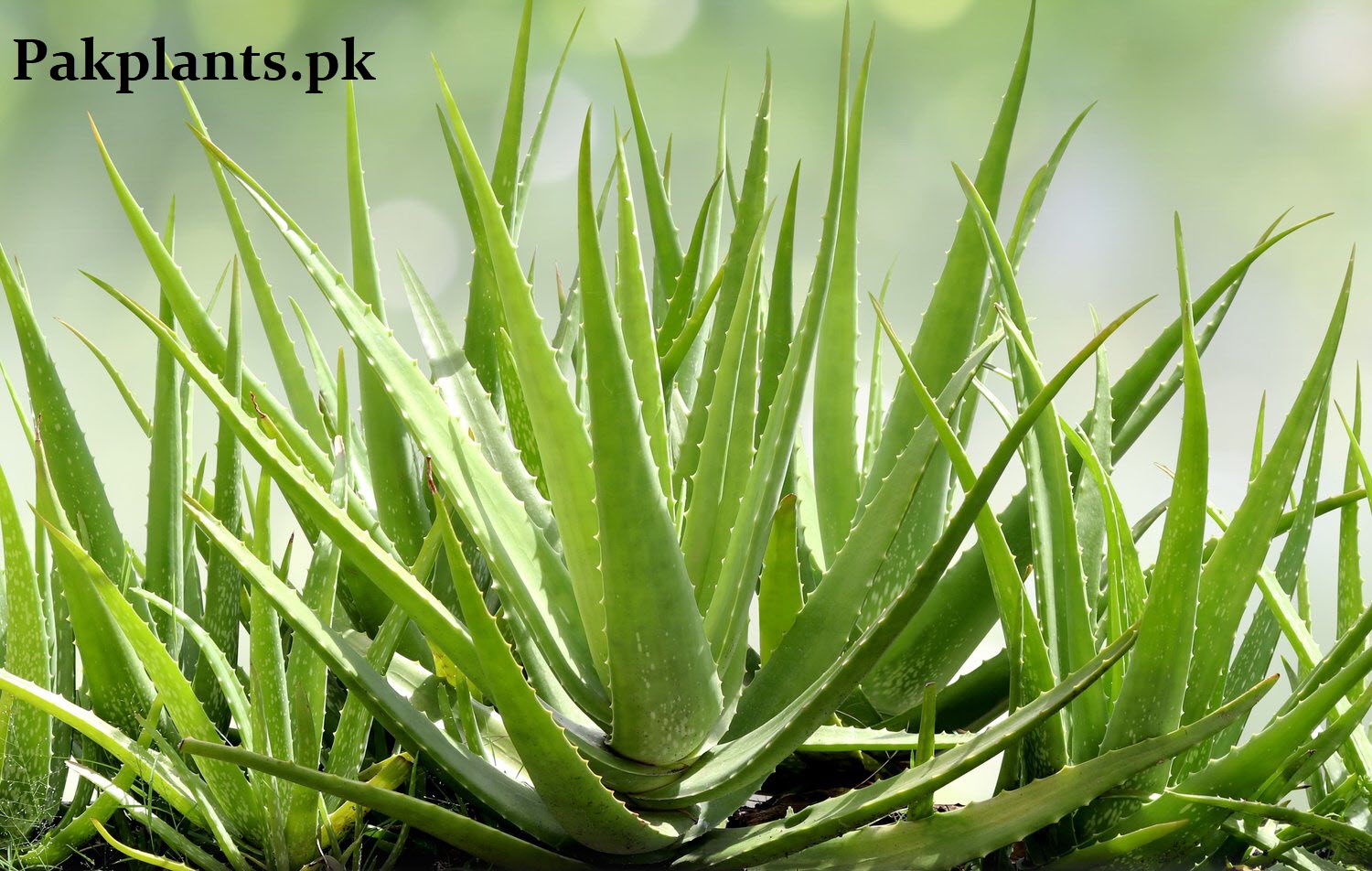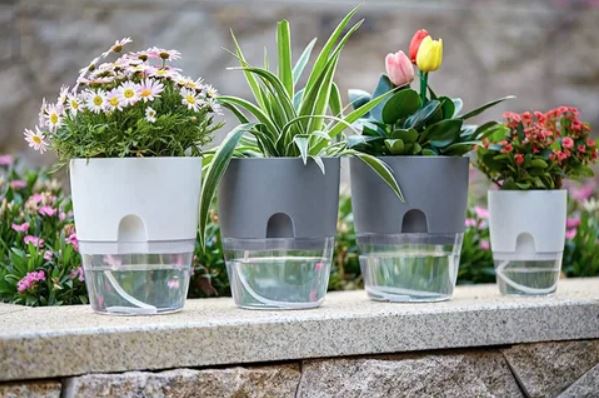
OLIVE TREE
The olive tree has a history dating back 37,000 years, originating in the Mediterranean region where its natural habitat is heathland. It is drought-resistant but sensitive to frost and can thrive even in poor soils. With roots that can extend up to 6 meters to access water, it is the oldest known cultivated tree.
Olive trees grow slowly, beginning to bear fruit between 3 and 7 years of age, reaching full maturity at 10 years, though their fertility starts to decline after 150 years. Remarkably, they can live for up to 1,000 years.
When properly cared for, olive trees can add an element of elegance to a garden. Though their lifespan is shorter when grown indoors—typically lasting 8 to 9 years—these trees are still popular for their attractive silvery evergreen foliage. To cultivate an olive tree indoors, it’s best to keep it in a warm, sunny spot and move it outdoors during the summer months.
How to propagate Olive Plant
1-Grafting
Grafting is typically done to acquire specific desired traits in a plant. To achieve this, select a healthy and young plant, ideally 1-2 years old, as it will have fresh sprouting branches and a lower risk of disease or infection. The best time for grafting is during the spring season.
To begin, cut the wild plant at the top, leaving about 5-6 cm above the ground. Then, take a cutting from the desired plant that will fit well onto the wild plant. Seal the grafted area with wax to protect it.
Place the grafted plant in direct sunlight with low humidity. After a few days, new shoots should start sprouting. Allow the plant to grow for a few months, and if needed, transplant it to a new pot.
2- Cutting
This is one of the easiest methods of plant propagation. Begin by selecting a healthy one-year-old tree. Cut a freshly growing branch from it, then remove the lower leaves and any extra twigs. The branch should have 4 to 5 nodes.
Dip the lower part of the cutting into a rooting medium and plant it in a soil mix. Keep it in warm conditions with low humidity. After 70-90 days, roots will begin to develop. However, this method is limited by the fact that the roots produced are often small or insufficient for strong growth.
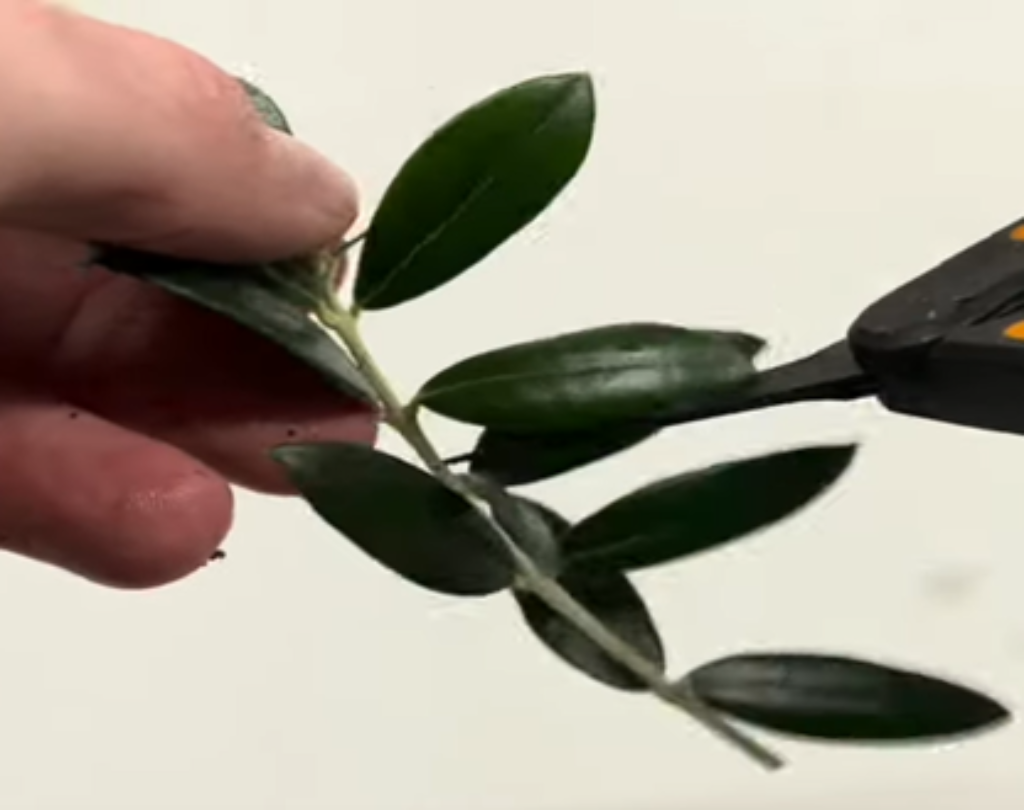
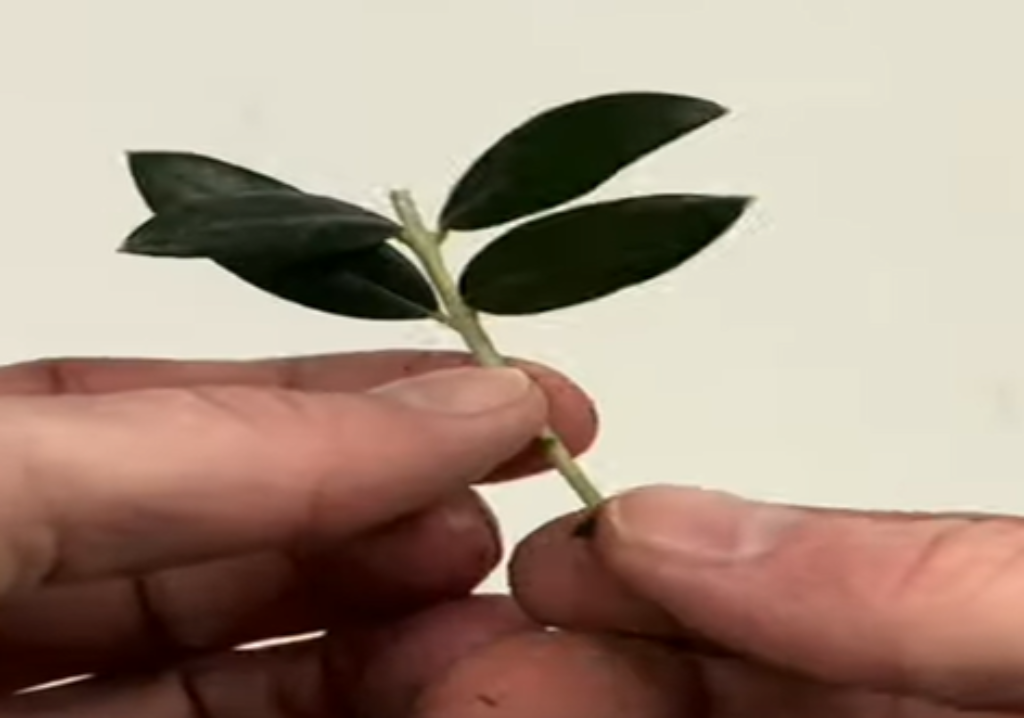
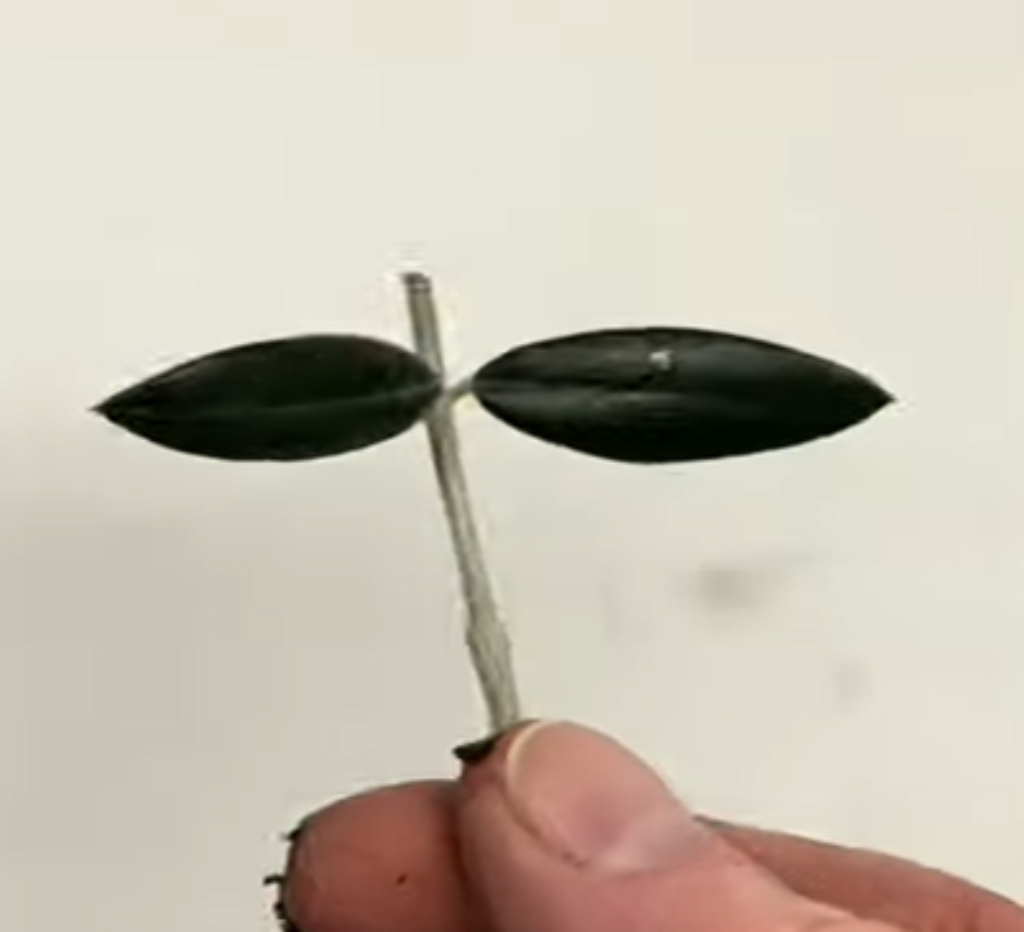
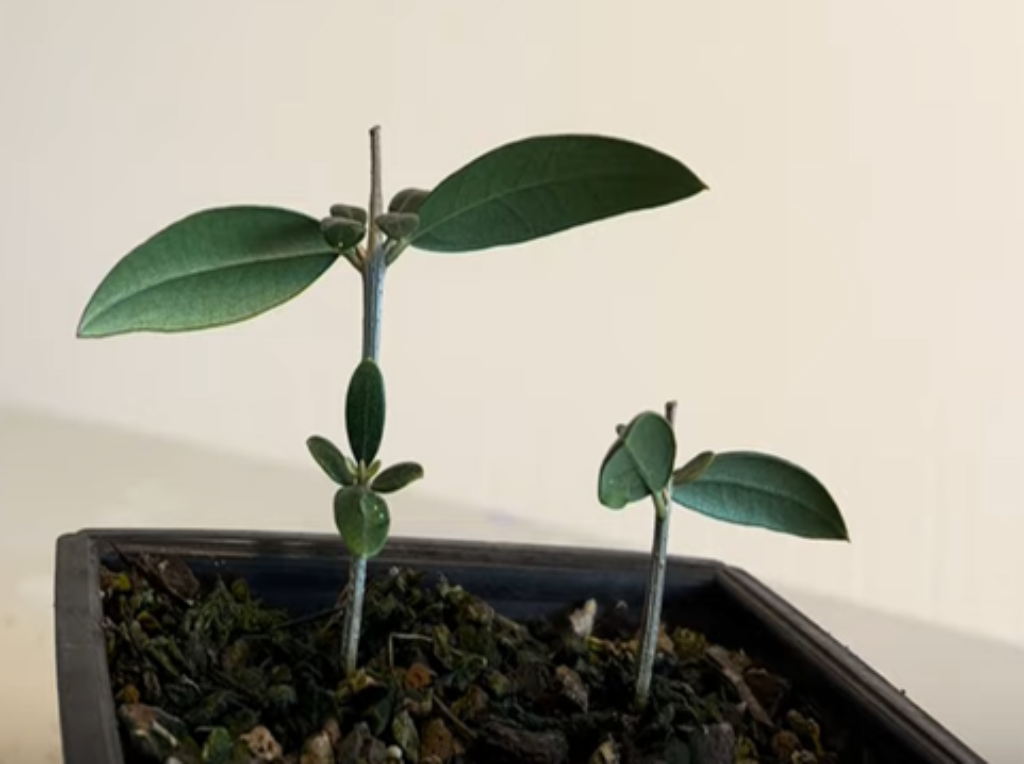
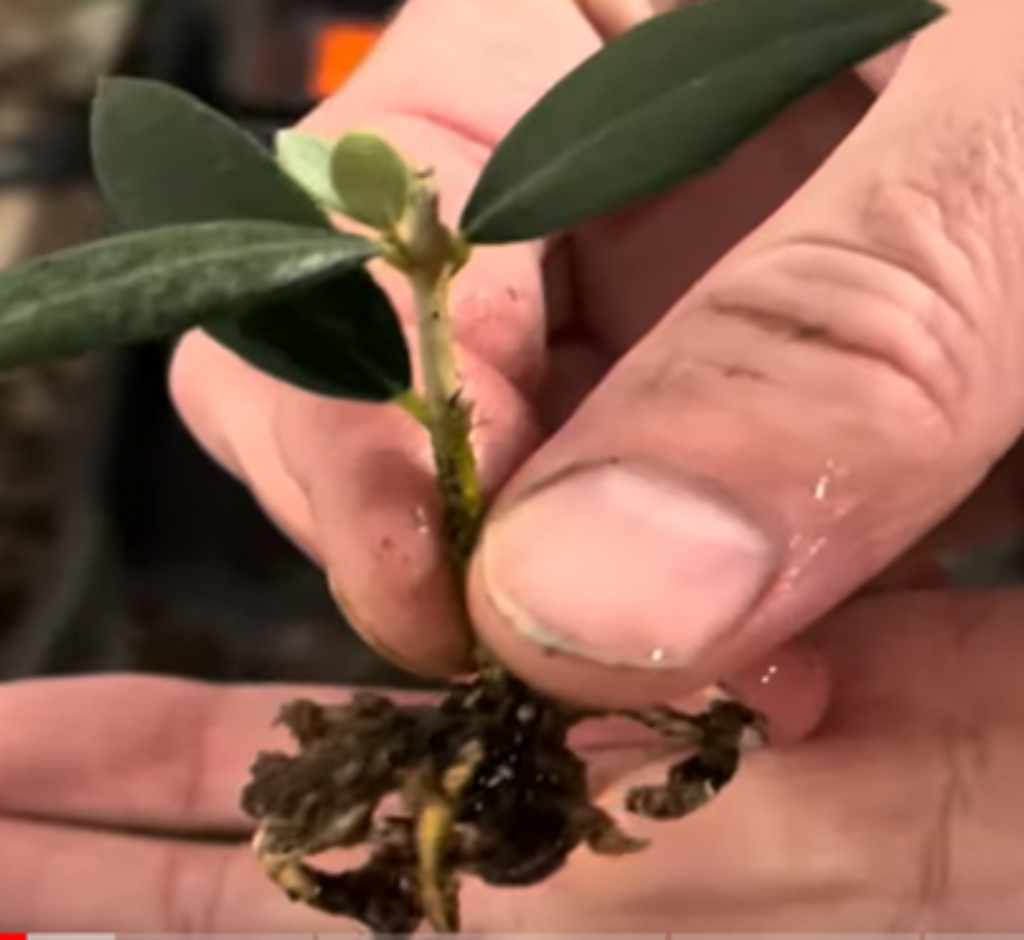
3-From sucker
The easiest method for home gardeners to propagate olive trees is by using suckers that grow from the base of the plant. If the sucker already has its own roots, you can cut it from the parent plant and plant it directly in soil. Alternatively, you can apply rooting hormone to the cut end before planting.
To encourage rooting, maintain high humidity by covering individual pots with a clear plastic bag. This helps create a moist environment for the sucker to establish itself.
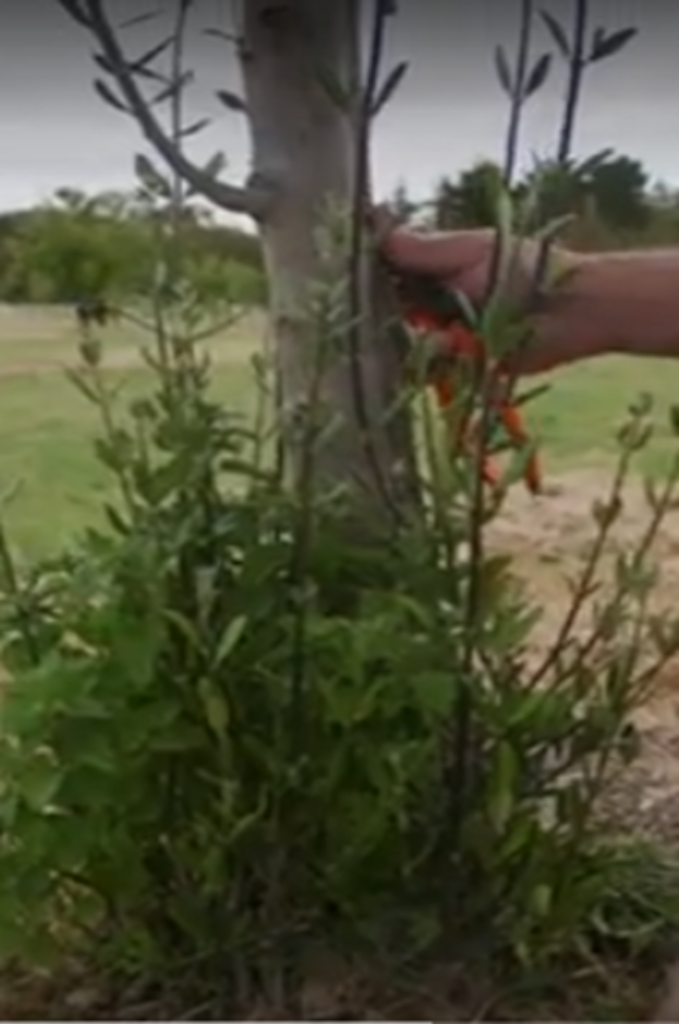
4-From seed
Seed selection is a crucial step in propagating olive trees. Choose healthy, disease-free seeds from a reliable source. If using fresh seeds from an olive, allow them to dry in the sun.
Remove the flesh from the seed, clean it thoroughly, and let it dry in the sun. Carefully remove the pit with caution. Plant the seed in a pot, placing it in a hole about 2 inches deep and covering it with soil. Ensure proper spacing to avoid overcrowding.
Place the pot in sunlight and water it daily. Olive seeds typically take about 40 days to sprout. Since olive trees grow slowly, it’s often recommended to purchase larger plants from local nurseries for faster results.
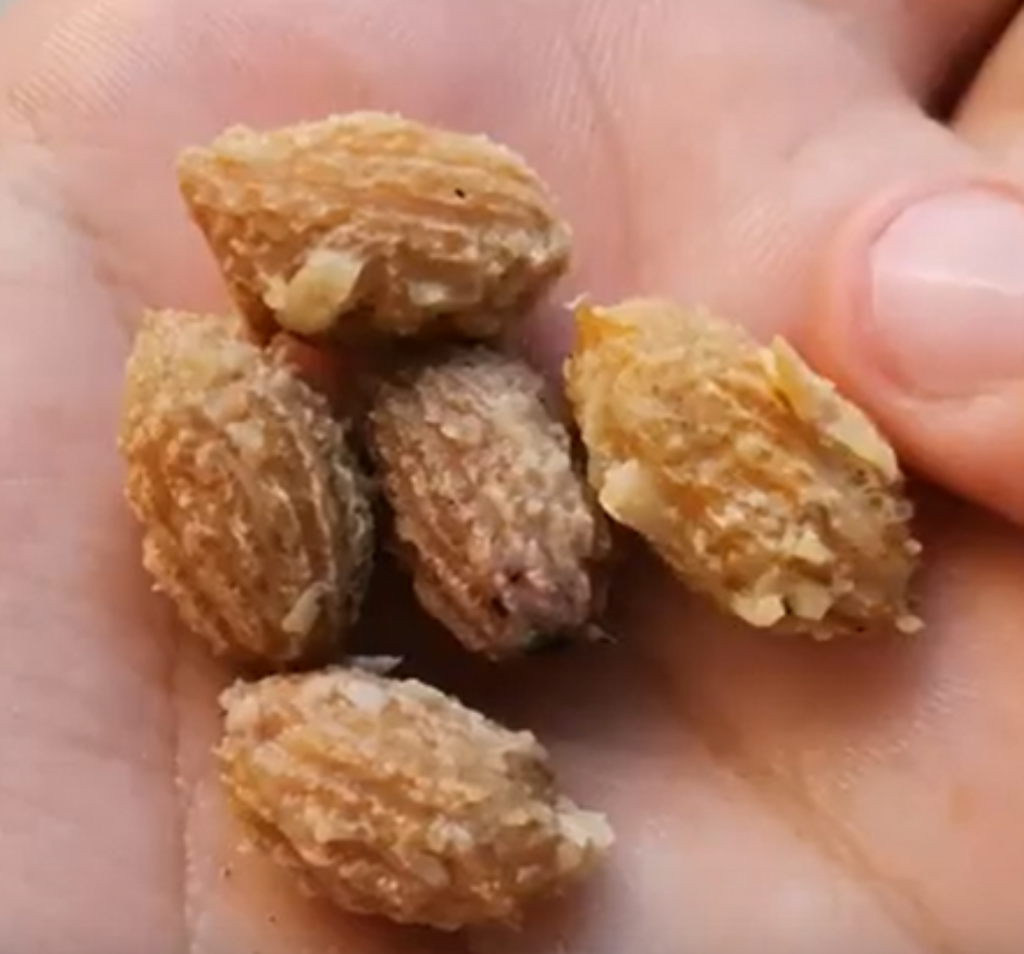
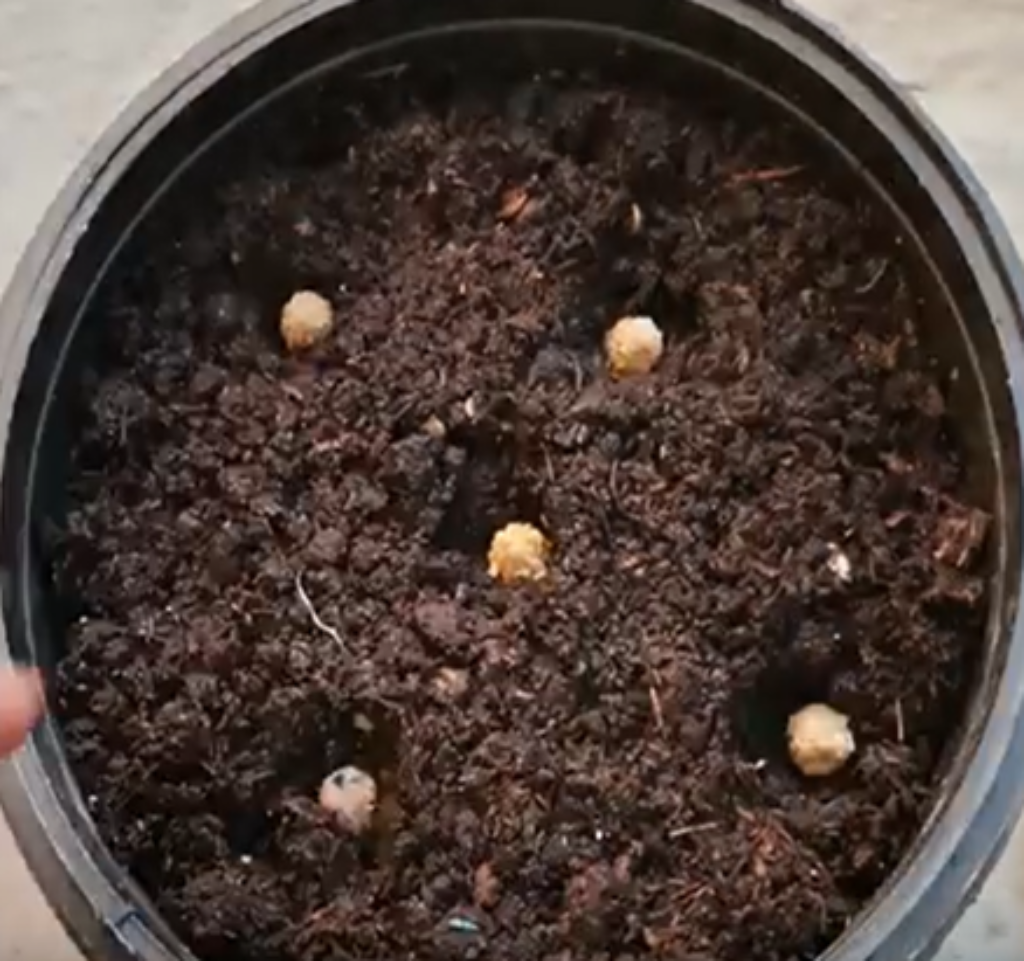

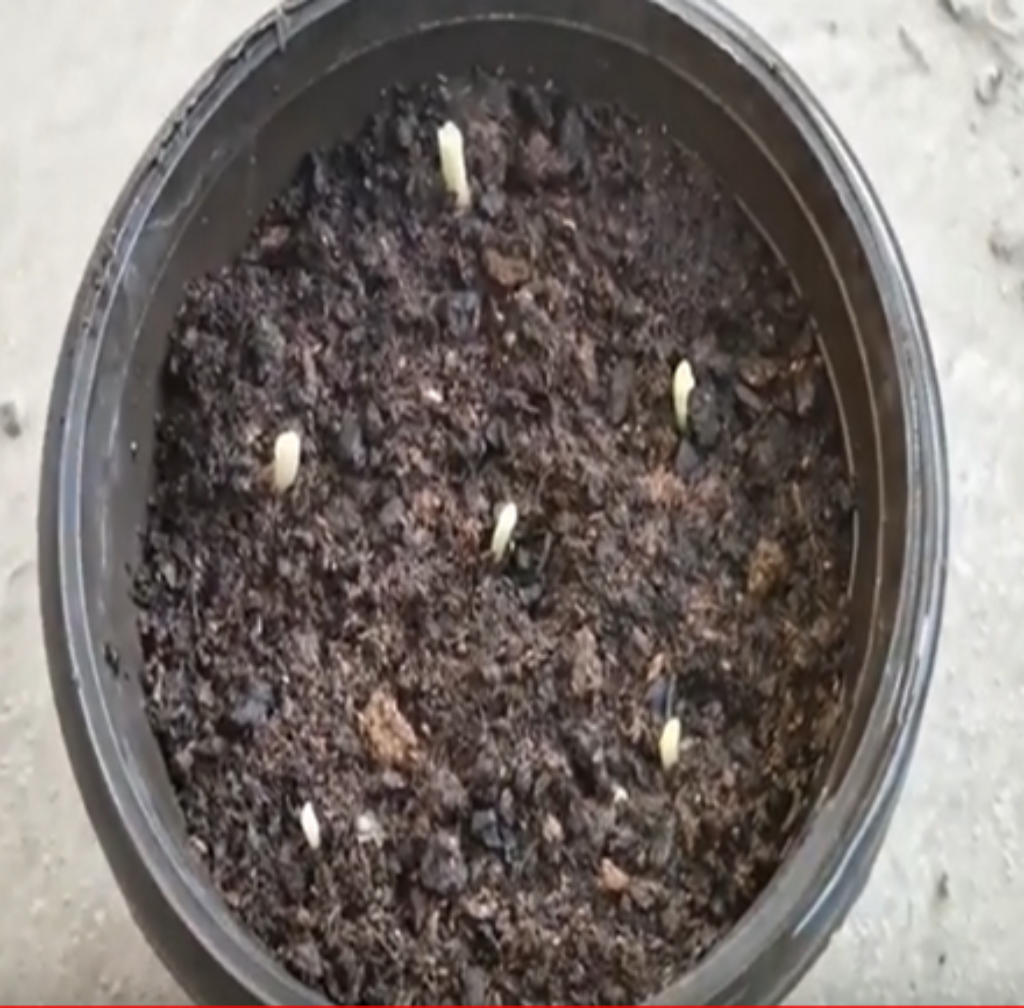
Conditions required to maintain healthy olive plants
Best season to grow the olive plant
The ideal time to plant an olive tree is in the spring. Avoid planting in winter, as the cold poses a significant risk to the tree’s growth and survival.
When selecting an olive plant
Style: Decide whether you prefer a traditional, natural-looking olive tree or one that has been shaped into a standard form, like a lollipop tree.
Size: Since olive trees grow slowly, consider purchasing the largest tree you can afford to save time and effort in the long run.
Inspection: Before planting, check the tree for signs of pests or diseases to ensure a healthy start.
Fertilize Olive Plant
Olive plants can grow in low-nutrient soils, but the soil must be well-drained. However, well-drained and fertile soil promotes better fruit production. In summer, use a balanced fertilizer or add compost or organic matter to improve soil quality. For potted plants, add fresh soil to the top each year. Be cautious with excessive nitrogen, as it can delay or reduce fruit production.
Minimize the Frost Exposure
This plant thrives in desert habitats and does not tolerate low temperatures, so it’s important to protect it from freezing conditions. During winter, use frost blankets or greenhouse sheets to shield the plant. Alternatively, bring the plant indoors, placing it in a living area where the temperature is warmer.
The trench method
To protect olive trees from winter, you can use the trench method. Dig a trench, plant the olive tree inside, and mulch it heavily. The depth of the trench and the amount of mulch will depend on your location’s climate.
Unlike air temperatures, soil temperatures remain more stable, protecting the plant’s roots from sudden temperature changes. However, the roots of potted plants are more exposed to air temperature fluctuations, making them more sensitive to changing weather conditions.
Infection Control
Regularly monitor olive trees for any signs of infection and apply organic pest control methods as needed. Implement preventive measures to protect the plants. Avoid excessive watering and moisture, as these conditions can lead to fungal infections.
Best Location for olive plant
As a desert-adapted plant, the olive tree thrives in sunny locations with well-drained soil. It requires about 6-7 hours of direct sunlight daily for healthy growth.
If you want to grow it indoor place the pot where it receive enough sunlight atleast 4 hours.
Soil Type
While olive trees can grow in low-nutrient soil, they perform better in soil enriched with organic matter and good drainage. They prefer alkaline soil with a pH between 6 and 8 and are naturally found in sandy, rocky, or heath soils.
When growing olive trees in pots, use a high ratio of vermiculite and sand, and a lower ratio of peat and garden soil to mimic their natural habitat and ensure optimal growth.
When to water olive plant
Olive trees are drought-tolerant once established but need regular watering during their first few years. Water deeply, allowing the soil to dry out slightly between watering to promote healthy root development.
How to get Potted Olive Trees to Flower and Fruit?
Indoor olive trees often do not produce fruit for two main reasons:
Lack of Winter Chill: Olive trees need a period of low temperatures, known as “winter chill,” to induce flowering. Without this cool spell, the flowering cycle can be disrupted, preventing fruit development. To address this, avoid keeping indoor olive trees in constant warm conditions, as they might not receive the necessary chill for flowering.
Limited Pollination: Indoor environments restrict the movement of insects, which are essential for pollination. Without adequate pollination, flowers may not develop into fruit.
Ensuring your indoor olive tree gets a period of cooler temperatures and finding ways to encourage pollination can help improve the chances of fruiting.
Pollination
Some olive trees are not self-pollinators and require another variety for pollination. Even self-pollinating varieties can benefit from cross-pollination for better fruit yield. Olive trees rely on wind to carry the pollen, which appears as a yellow dust. For indoor plants, you can mimic this process by using a feather duster to help transfer pollen between flowers.
When to Harvest Olives
Harvesting olives depends on the variety, season, and stage of ripeness. Olives can be picked at different stages:
1. Green: Wait until the juice inside changes from clear to milky before harvesting.
2. Color Development: Harvest as the olives start to develop color.
3. Fully Colored: Pick olives when they are fully colored, which is typically deep purple or black.
Indoor olive plant /Care for Olive Trees in Pots
Olive trees in pots
Olive trees thrive in pots with well-draining soil. Terracotta pots are a good choice because they are breathable and stylish, making them ideal for patio displays.
When selecting a pot, choose a compact variety of olive tree that doesn’t grow too tall but has a deep root system. Opt for a larger pot to support the tree’s future growth and ensure it has ample space to develop its roots.
Soil
For potting olive trees, use soil that drains water easily. A loam-based potting soil is ideal. While compost is not required in large amounts since olive trees can grow in nutrient-poor soil, adding perlite will help make the soil softer and improve drainage. This combination ensures that the soil remains well-drained, promoting healthy root development.
Water
Olive trees are drought-tolerant and do not require frequent watering, especially when grown in pots. It’s crucial to avoid letting water stand for extended periods, as marshy soil can lead to root rot. Ensure that the pot has drainage holes to prevent water from collecting at the bottom.
Do not place the pot in areas where water accumulates, such as low spots or saucers that collect rainwater. Olive trees dislike “wet feet,” so proper drainage is essential for their health and longevity.
If you are living in cold areas don’t put your potted plants until frosting start.
Pruning Potted Olive Trees
Prune olive trees to encourage upright growth and timely fruiting. Remove suckers, low branches, and any side branches that have grown excessively. The optimal time for pruning is winter. Aim for an open center structure to ensure good air circulation and sunlight penetration.
Pruning for Young Olive Trees:
Olive trees can produce new shoots from older parts of the plant, making it possible to prune an overgrown tree effectively. Be careful not to tear the bark during pruning, as healing damaged bark requires significant energy from the tree.
Autum season is best for pruning. Young olive trees are often fragile and need support. Secure the tree loosely to a stake, which can be removed once the stem has developed sufficient strength. Trees grown from cuttings, which are commonly available, can bear fruit even when small—sometimes as small as twelve inches.
For trees grown from mature cuttings, early fruiting can inhibit stem growth. To promote long-term health and strength, remove early fruits from young trees to allow the stem to develop robustly.
Shape a Young Olive Tree
When developing a young olive plant into a tree, aim to establish “scaffold” branches that extend horizontally from the main trunk. These branches, typically 3-5 in number, serve as the tree’s primary limbs. For a tree that reaches approximately the height of a person, allowing these scaffold branches to form about 3 feet from the ground is an effective starting point.
The size of potted plants
For potted olive trees, it’s ideal to keep their size manageable for ease of portability. A height of about six feet is suitable for potted olive trees. Once the tree reaches this height, continue regular pruning to maintain its shape and size. This helps ensure the tree remains healthy and easy to manage.
Maintenance Pruning for Established Plants
Fruits form on newly growing twigs, so avoid pruning off new wood. Cut branches that have bent under their own weight, as this will encourage the growth of new branches where fruits will develop.
Prune the tree according to the desired shape, and remove suckers and crossing branches. Also, trim upward-shooting branches to control the tree’s height and promote better fruiting.
Potting and Repotting Olive Trees
Repot olive trees in the spring, using a larger pot to accommodate their deep roots, which can extend 30-40 inches. Olive trees do not need repotting every year; instead, simply add compost to the top layer of the soil to provide ongoing nutrients and support healthy growth.
Olive tree varieties
There are more than one thousand varieties with diverse colors, shapes, sizes, and fruit characteristics. Some highly used varieties include:
Picual: The most widely planted variety due to its excellent oil quality and high yield.
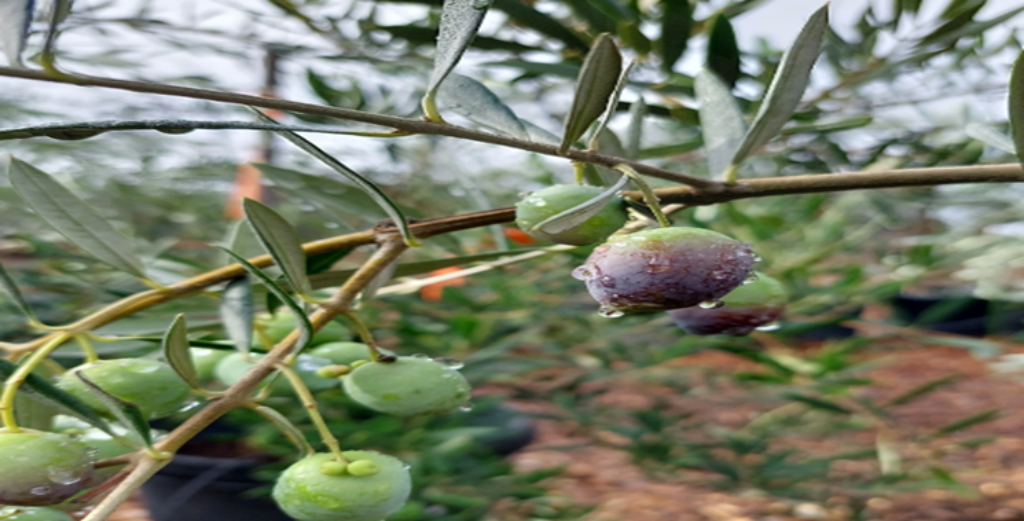
Koroneiki: Known for its high productivity, this variety produces small fruit and high-quality oil.
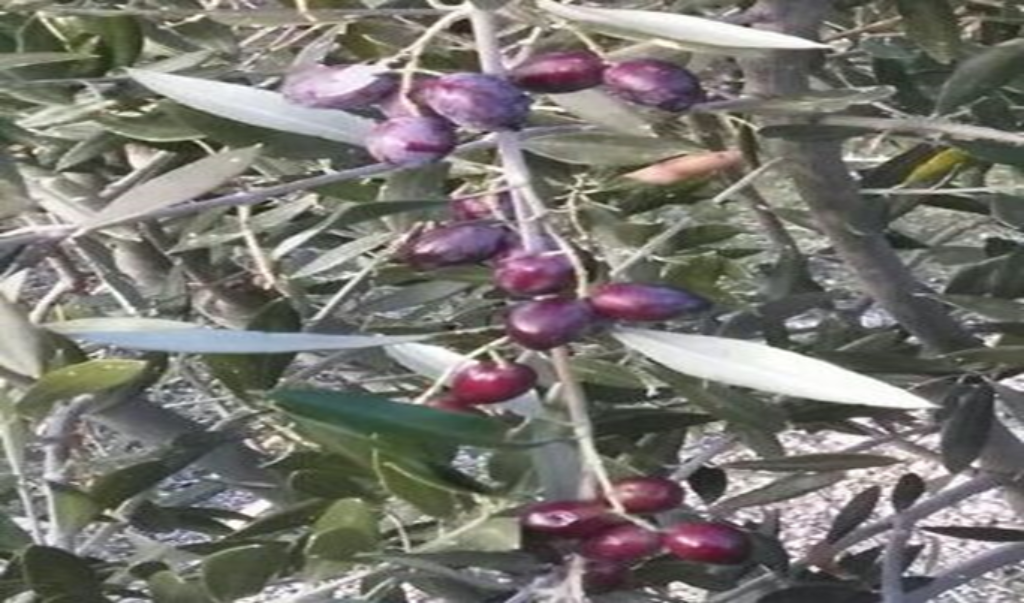
Frantoio: A Tuscan variety typically used for olive oil extraction, it thrives in cooler areas and is relatively easy to grow.
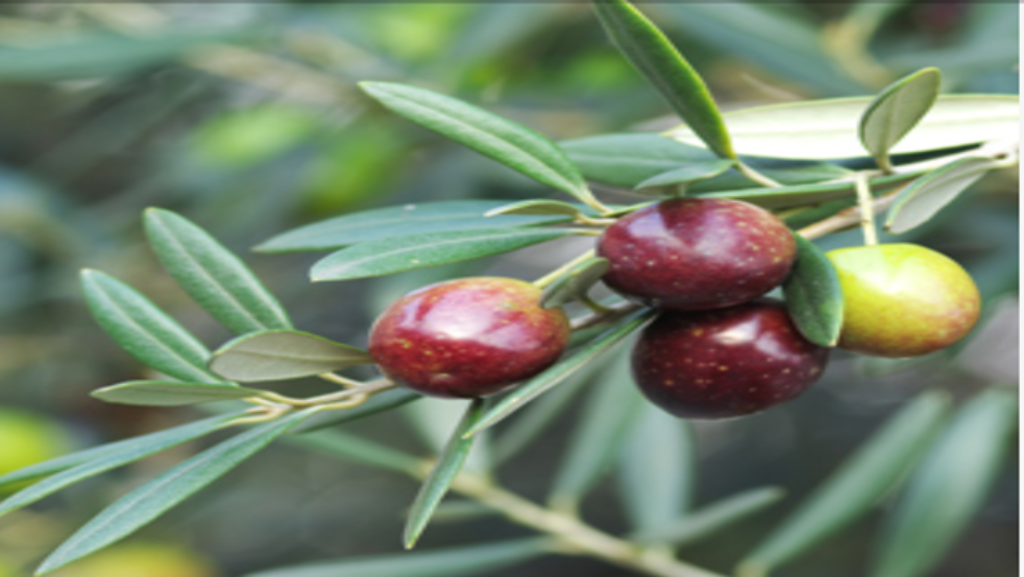
Arbequina’: A Spanish variety with a small height and high tolerance, suitable for various conditions.
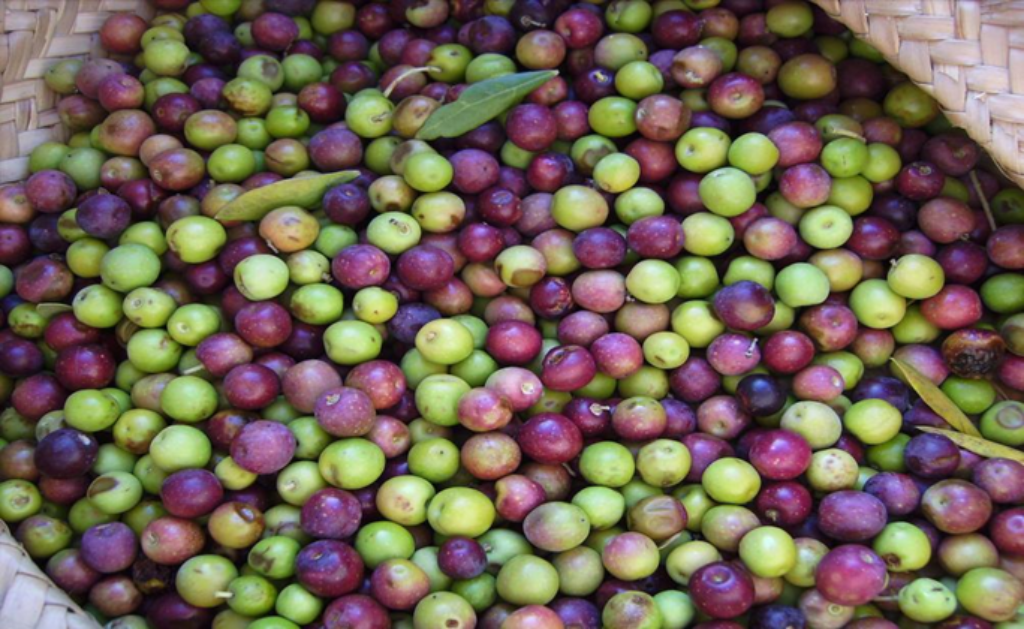
Leccino: A reliable Italian variety that grows well in cooler climates.
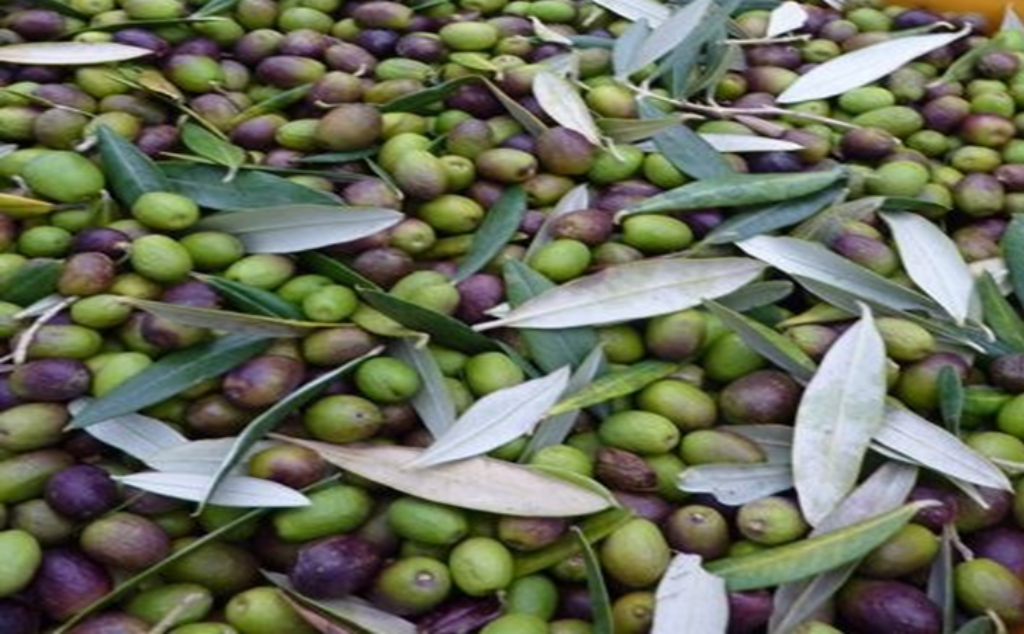
Cipressino: A compact, hardy southern Italian variety ideal for pot cultivation and coastal gardens.
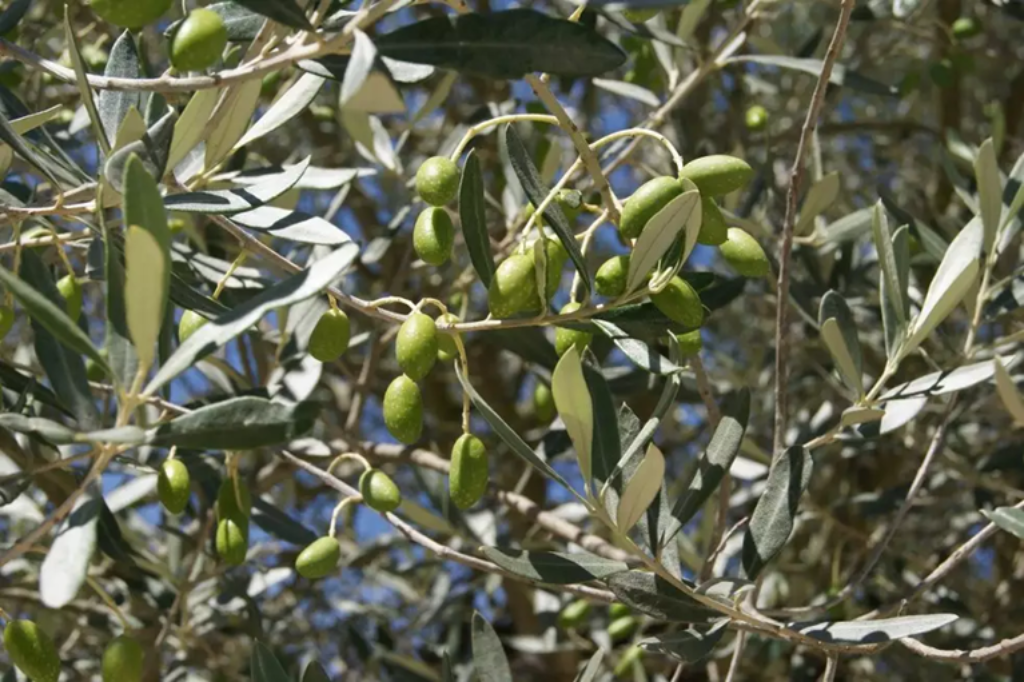
Manzanillo: Popular for both table olives and oil production, this variety features large, flavorful fruits and a vigorous growth habit.
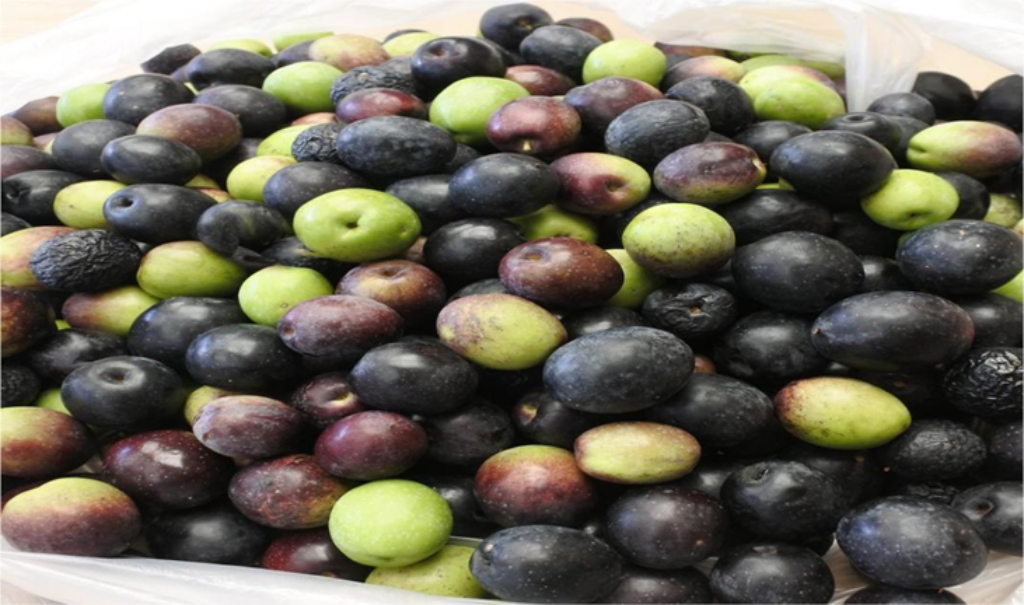
Common problems of olive tree
White spots on the leaves
In very poor soil or extremely dry conditions, olive trees may develop leaf spotting. While olive trees can draw nutrients from the soil, a lack of nutrients and water can lead to these issues. To prevent leaf spotting, ensure good drainage and enrich the soil with compost.
Leaves dropping
Watering and Drainage: Ensure you provide water with good drainage. If roots are emerging from the drainage holes, consider repotting the plant into a larger pot.
Leaf dropping in olive trees can result from several factors, including nutrient deficiency, overly dry conditions, or inadequate pot size. To address these issues:
Curling leaves
For curling leaves, which can be caused by low light conditions, ensure the plant receives adequate light. If the plant is indoors, place it in a location with sufficient natural light or use supplemental grow lights.
Fruit once in two years
Alternate bearing is a common phenomenon in fruiting plants where they produce a heavy crop one season and a lighter crop the next due to insufficient energy. To mitigate this:
Pruning: Regular pruning helps manage the plant’s energy reserves and encourages more consistent fruit production.
Nutrition: Providing good nutrition ensures the plant has the necessary resources to support consistent fruiting each season.
Root Rot
Root rot is result of over watering. Trim the infected roots. Replant it in dry soil.
Wilting
Watering: Ensure consistent watering, especially during dry seasons, to keep the soil adequately moist.
Cooling: Spray the plants with water to help keep them cool during scorching heat. This helps prevent heat stress and supports overall plant health.
Fungal Infections
Moist conditions can increase the risk of fungal infections. To manage this:
Dehumidification: Use a dehumidifier in humid conditions to reduce moisture around the plant.
Watering: Water the plant only when the soil is dry to prevent excess moisture, which can lead to fungal problems.
Diseases of olive tree
Crown Gal
Crown gall is caused by bacteria that typically infect the roots below the soil line. This infection leads to the formation of galls or tumors on the roots, which impair the tree’s ability to transfer water and nutrients. As a result, the tree becomes weakened and may eventually die if the infection is severe. To manage crown gall:
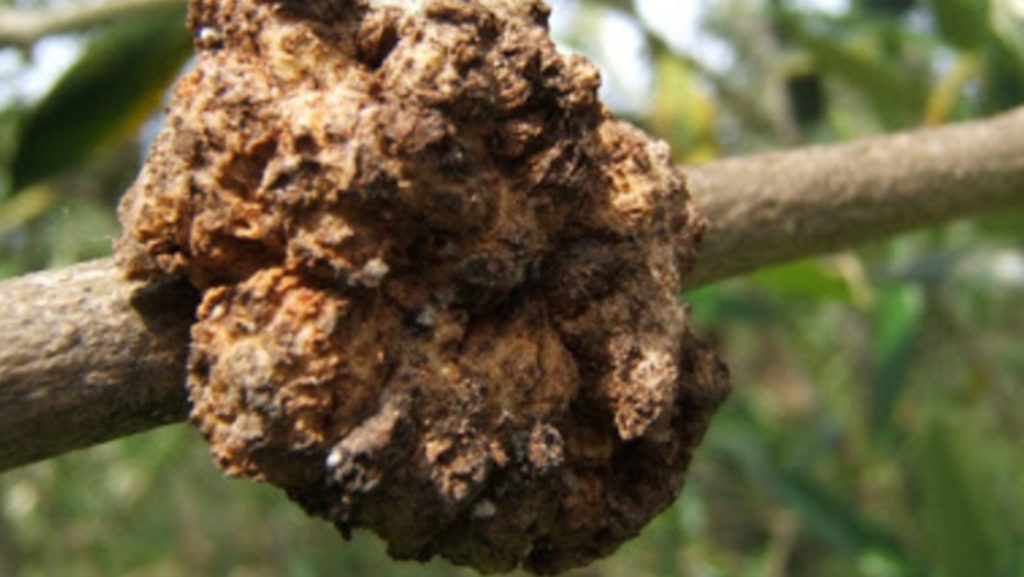
Prevention: Use resistant varieties if available and ensure proper planting practices to reduce root damage.
Sanitation: Clean tools and equipment to prevent the spread of bacteria.
Soil Management: Improve soil health and drainage to support strong, resilient plants.
If you suspect an infection, consult a local extension service or plant pathologist for specific management strategies.
Verticillium
Verticillium wilt is a fungal infection that causes olive leaves to curl and discolor, potentially spreading to other parts of the tree and leading to its death. To prevent this, olive tree growers should carefully select planting sites and avoid soils previously used for growing tomatoes, potatoes, or other vegetables, as these crops are also susceptible to Verticillium.
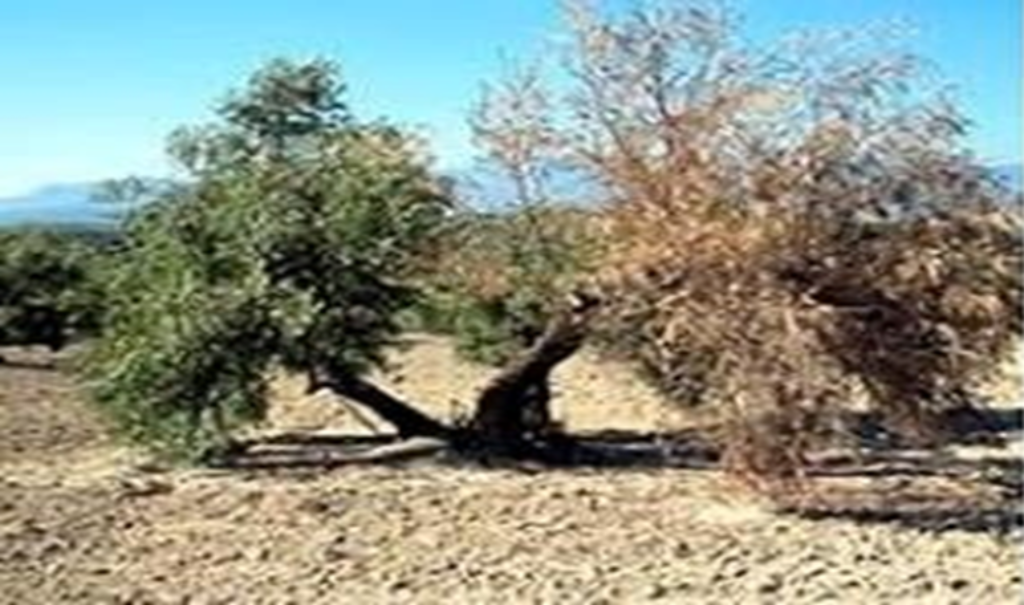
Olive Fly
The olive fly is a small insect that exclusively feeds on olive trees and is particularly common in the Mediterranean region. It can significantly reduce olive production within a few weeks by causing dark spots on the fruits, which affects both the quantity and quality of the harvest. To control olive flies, hydrolyzed baits are used in some countries, which attract and trap the flies, helping to manage their population and minimize damage.

